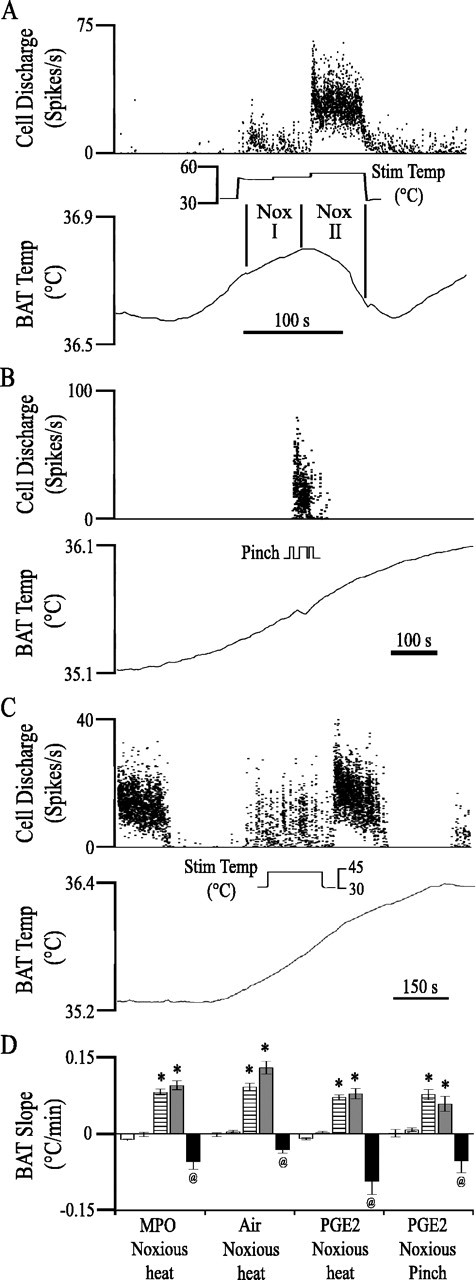Figure 5.

Noxious stimulation blocks BAT temperature rise. A, The BAT temperature increase elicited by cold air challenge (onset was 197 s before beginning of the traces) reversed direction and began to decrease in response to long-duration noxious thermal stimulation of the forepaw (inset). An RM ON cell was excited by noxious forepaw stimulation. The timing of the Noxious I (Nox I) and Noxious II (Nox II) periods are labeled in the inset. B, Noxious pinch reversed the BAT temperature slope and excited an RM ON cell. C, Warm stimulation (inset) of the forepaw had no effect on either BAT temperature slope or ON cell firing. D, BAT temperature slope during the four periods described above as well as during the “baseline” period (5 min before stimulation). In each of the four groupings, the bars represent sequentially baseline, post-challenge and pre-BAT, BAT plus 3 min, Noxious I, and Noxious II periods (as described in Materials and Methods). Statistically significant differences from baseline are marked by an asterisk. Differences from both baseline and BAT plus 3 min values are marked by the @ symbol. Error bars indicate SEM. Stim, Stimulation; Temp, temperature.
